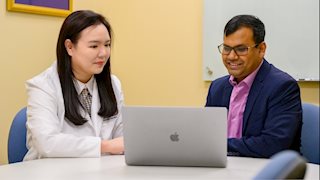
On September 25, 2019, millions of pharmacists worldwide celebrated World Pharmacists Day, this year's theme was “safe and effective medicines for all.”
The annual day is used to highlight the value of the pharmacy profession to stakeholders and to celebrate pharmacy globally. It was originally adopted in 2009 at the World Congress of Pharmacy and Pharmaceutical Sciences.
The 2018 theme was “Pharmacists: Your Medicines Experts,” meant to emphasize that pharmacists are a trusted source of knowledge and advice for both patients and health care professionals.
The International Pharmaceutical Federation (FIP) announced this year’s theme in March 2019, and said it aims to promote pharmacists’ role in safeguarding patient safety through improving medication use and reducing medication errors.
“Pharmacists use their broad knowledge and unique expertise to ensure that people get the best from their medicines,” said FIP President Dominique Jordan in a statement. “We ensure access to medicines and their appropriate use, improve adherence, coordinate care transitions and so much more.”
In the US, some pharmacists are using the theme as a chance to reflect on how they can further impact patient safety.
“The equivalent of the entire US population visits a pharmacy every week,” said Jim Kirby, PharmD, BCPS, CDE, FAPhA, Sr. Director of Pharmacy Services for Kroger Health. “This affords a tremendous opportunity for community pharmacists to engage patients, assess their medications, and ensure they are being used safely and effectively.”
Rena Gosser, PharmD, BCPS, RPh, is a population health pharmacist at the University of Washington School of Medicine in Seattle, WA. She pointed out that in addition to obvious safety precautions taken by all pharmacists, medication optimization is a key opportunity to ensure patients are safe.
“A lot of times we think of ways to prescribe the most safe and effective medications for patients,” Gosser said. “But there’s so much more to it than that. Issues like financial toxicity can also affect adherence and safety.”
By identifying patients who could have a more optimized regimen, Gosser works to improve broad safety for all patients.
“From a safety standpoint, we look at patients that are reporting adverse events,” she added.
Solutions to those issues could include changing the dose or changing the medication completely, but without adherence and medication optimization, Gosser said pharmacists will never know if that patient has issues with their medication. For that reason, she added, patient education is another important piece of the puzzle for pharmacists looking to improve patient safety.
Like Gosser, Tyler Vest, PharmD, said medication safety and efficiency is vital to supporting the theme of “safe and effective medicines for all”.
Vest oversees medication cabinets on the floors at Duke University Hospital, and said that position provides lots of opportunities to help patients. The system of cabinets that Vest oversees are safer for controlled substances, he said, and can save time instead of obtaining medications from a centralized or satellite pharmacy location.
Finally, Vest said, in addition to safe handling and administration of medications, providing personalized and individualized care for patients is important to ensuring that they’re on the correct medication, at the correct dose, and taking it when appropriate.
“Ultimately,” Vest said, “when you’re talking about safe medications and effective use, I think every patient deserves the right to have an individual pharmacist taking care of them.”
*Note: this article was originally published in yesterday's Pharmacy Times.
